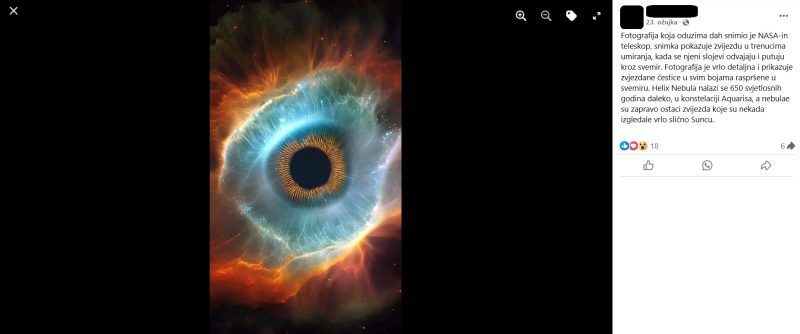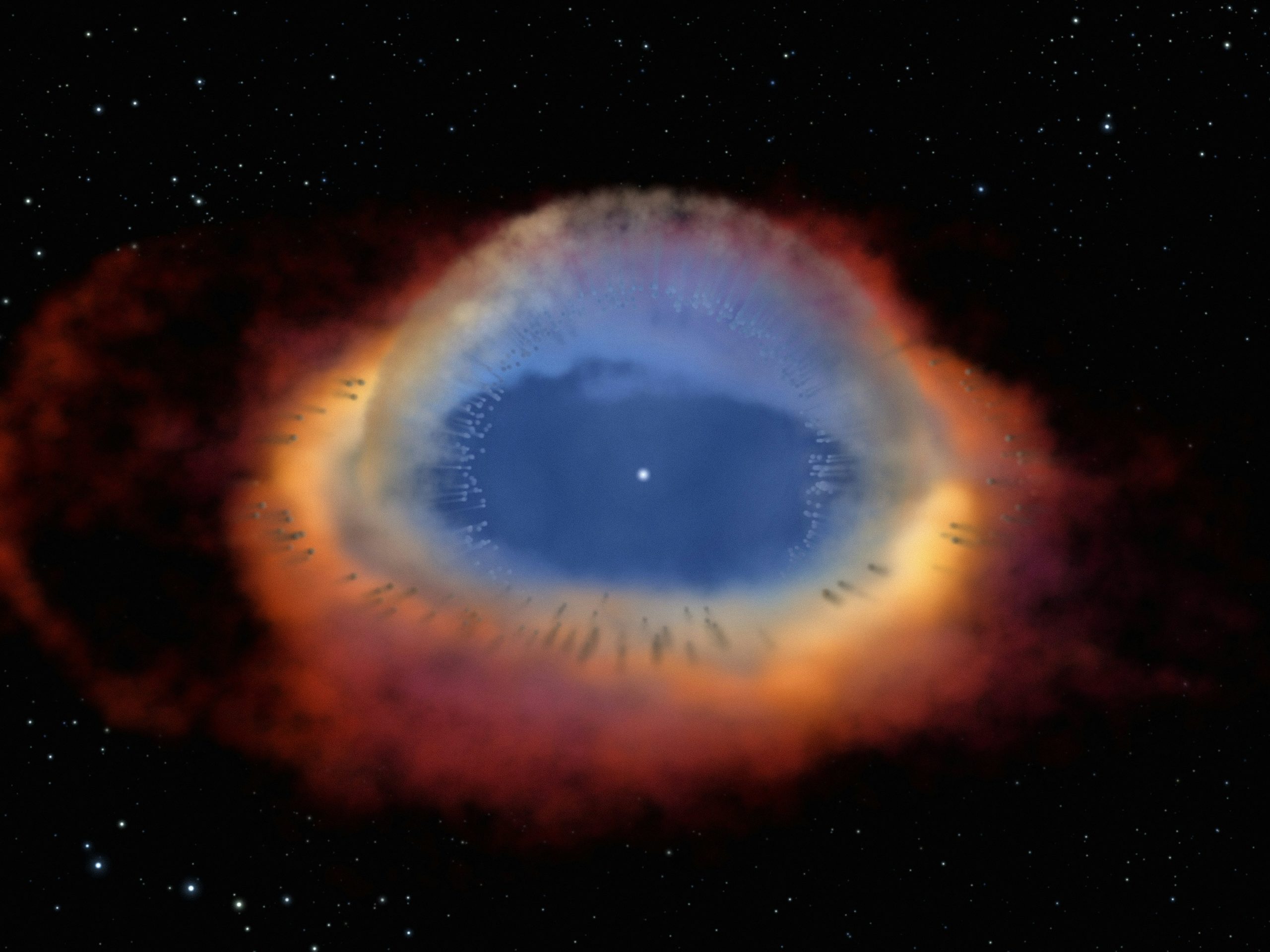Original article (in Croatian) was published on 12/5/2024; Author: Ladislav Tomičić
A photograph has spread across social media, with incorrect claims that it was taken by a telescope from the American space agency NASA.
Facebook users are widely posting the photograph, asserting that it shows the planetary nebula from the Aquarius constellation (archived here).
“The breathtaking photograph was taken by NASA’s telescope; it shows a star in its dying moments, as its layers separate and travel through space. The photograph is highly detailed and depicts star particles in all colors scattered across the universe. The Helix Nebula is located 650 light-years away in the constellation Aquarius, and nebulae are actually remnants of stars that once resembled the Sun,” the post reads.

“God’s eye,” one user writes in the description (archived here), sharing the photo, which they evidently believe to be an authentic depiction of a cosmic nebula. Another user (archived here) shares the same image, labeling it “The Cosmic Eye,” while a third user clarifies that it is “one of the most beautiful known nebulae – the Helix Nebula or ‘God’s Eye.’” “The photograph reveals a dying star that has shed its outer layers in a spectacular explosion,” reads the description accompanying this post (archived here). On English-speaking platforms, such posts are common and widely shared, as demonstrated by a post in the “National Geographic and History Lovers” group, which has been shared over five thousand times (archived here).
The Helix Nebula, located in the Aquarius constellation more than 650 light-years away, is indeed referred to as God’s Eye, the Cosmic Eye, or the Cosmic Orb, but it does not look the way it is depicted in the photograph that Facebook users are sharing.
The true appearance of the Helix Nebula is shown in the most detailed photograph taken by NASA telescopes in collaboration with the U.S. National Science Foundation. The photograph is available on the Getty Images platform, and we have also used it as the cover image for this article, sourced from AFP. The image was taken in May 2003.
The description of the photograph on Getty Images reads: “This image of the spiral Helix Nebula is one of the largest and most detailed pictures of a cosmic object ever taken. The complex image is a flawless combination of ultra-sharp images from NASA’s Hubble Space Telescope and wide-angle shots from the Mosaic camera on the National Science Foundation’s 0.9-meter telescope at the Kitt Peak Observatory near Tucson, Arizona. The image shows a fine network of fibrous features resembling ‘bike spokes’ embedded in a colorful red-blue ring of gas. Located 650 light-years away, the Helix is one of the closest planetary nebulae to Earth. A planetary nebula is a bright gas cloud surrounding a dying star similar to the Sun.”
In its accuracy assessment from November this year, Snopes ran the photograph through AI content detection tools, which returned a result suggesting that the image is likely AI-generated.



